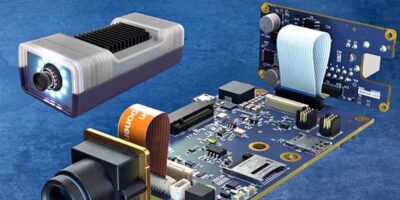Fabless RF component company, Mobix Labs has the MBX10 True5G mmWave beamformer antenna in package (AIP) and its MIC600 single-chip, single-die beamformer IC.
The MBX10 is a 16-channel RF front end which includes all power amplifiers, low noise amplifiers, phase shifters, variable gain amplifiers, switches, and matching circuits with an integrated 2 x 2 antenna in package (7.5 x 7.5 x 1.8mm) that provides what Mobix Labs claims is “unprecedented levels of integration and scalability” in a cost-effective, bulk CMOS-based solution. The 16-channel support includes vertical, horizontal and circular polarisations and the 24 operating modes can transmit and receive on different frequencies simultaneously. They are scalable to meet any antenna array size requirement, says the company.
The Bulk CMOS technology allows the company to incorporate advanced functionality into a low-cost structure that can scale to meet the needs of any mmWave 5G system, said Fabian Battaglia, CEO of Mobix Labs. “We close the performance gap between Bulk CMOS and other manufacturing processes that gives customers looking to deploy 5G mmWave solutions a significant advantage in performance, efficiency, cost, size and time to market,” he said.
The MBX10 AIP and MIC600 Beamformer IC accelerate 5G mmWave network deployment and adoption in applications such as automotive, small cells, repeaters, access points, industrial IoT, medical, and consumer products.
The MBX10 and MIC600 are a single-chip, single-die Bulk CMOS solution offering worldwide coverage of 24.25 to 43.5GHz. They are claimed to offer superior thermal performance for improved efficiencies and better management of heat emissions.
Mobix Labs will be sampling the MBX10 and MIC600 to strategic customers by the end of Q3 2021.
Mobix Labs is a fabless semiconductor company, founded in 2020, based in Irvine, California, USA. It develops RF products for simplifying the design of next-generation 5G wireless products. The company manufactures compact, integrated, single-chip, single-die, CMOS-based mmWave beamformers, antenna solutions and RF semiconductors.







